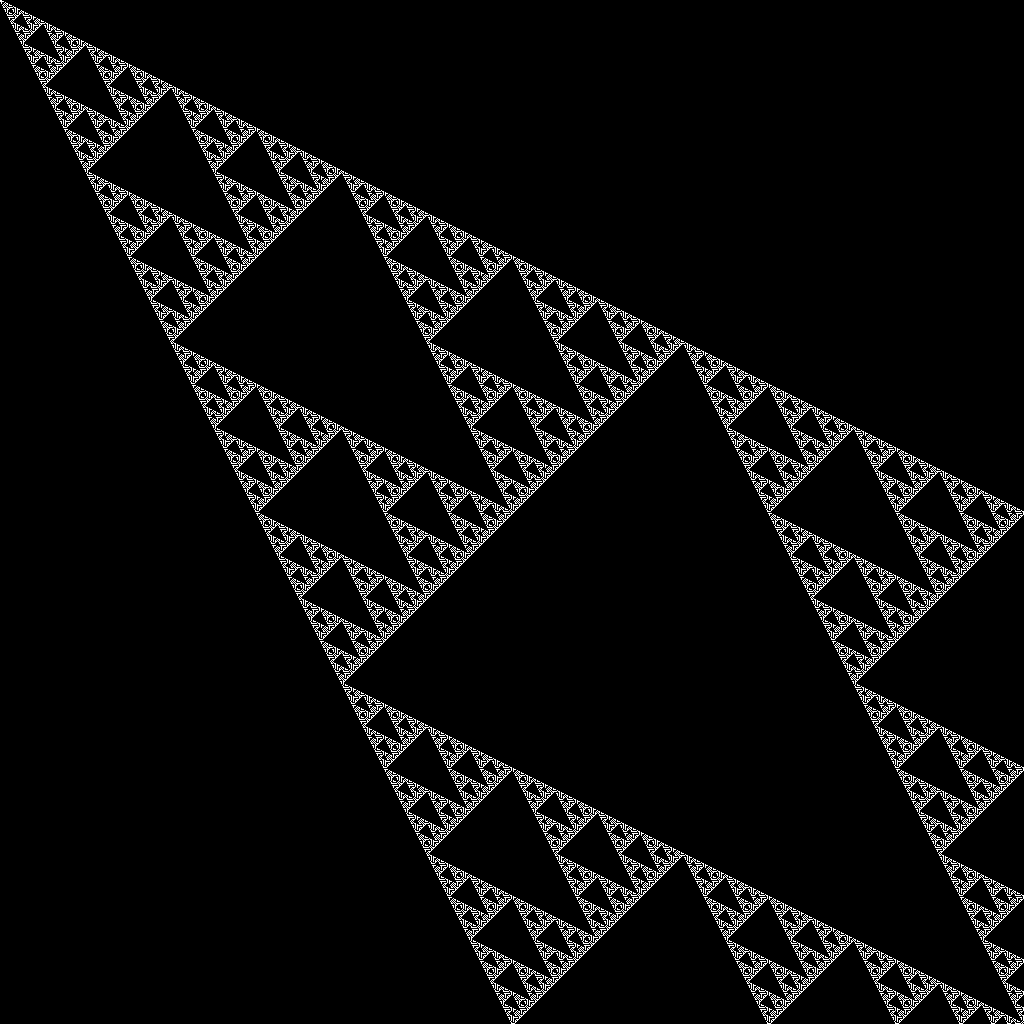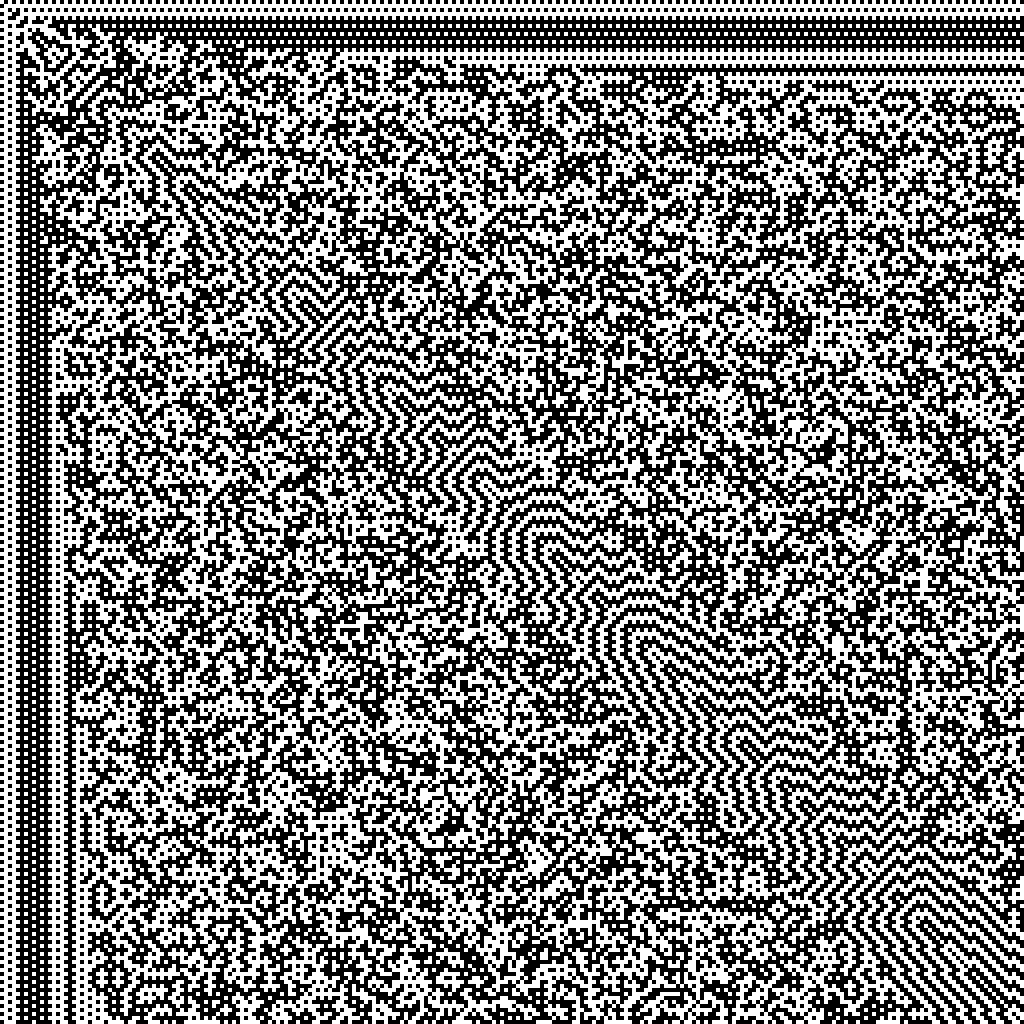My friend Alec Jones and I wrote a Python script that takes a two-dimensional sequence in the On-Line Encyclopedia of Integer Sequences and uses it to create a one-bit-per-pixel (1BPP) “parity bitmaps“. The program is simple: it colors a given pixel is black or white depending on whether the corresponding value is even or odd.


An Unexpected Fractal
We’ve now run the script on over a thousand sequences, but we still both agree on our favorite: the fractal generated by OEIS sequence A279212.
Fill an array by antidiagonals upwards; in the top left cell enter \(a(0)=1\); thereafter, in the \(n\)-th cell, enter the sum of the entries of those earlier cells that can be “seen” from that cell.
Notice that in the images below, increasing the rows and columns by a factor of \(2^n\) seems to increase the “resolution”, because the parity bitmap is self similar at 2x the scale. We still don’t have a good explanation for why we’d expect these images are fractals. If you know, please answer our question about it on Math Stack Exchange. (Alec and I have generated these images up to 16384 × 32768 resolution, roughly 536 megapixels.)
The Construction of the Sequence
The sequence is built up by “antidiagonals”, as shown in the GIF below. In the definition, “seen” means every direction a chess queen can move that already has numbers written down (i.e. north, west, northwest, or southwest). That is, look at all of the positions you can move to, add them all up, write that number in your square, move to the next square, and repeat. (The number in cell \(C\) also counts the number of paths a queen can make from \(C\) to the northwest corner using only N, NW, W, SW moves.)

(Interestingly, but only tangentially related: Code Golf Stack Exchange User flawr noticed that the number of north/west rook walks is related to the number of ways of partitioning a \(1 \times n\) grid into triangles.)
Parity Bitmaps for Other Sequences
It’s worth noting that many sequences are all black, consist of simple repeating patterns, or look like static. However, chess-type constructions, as illustrated by the GIF above, the one above yield images that look like the Sierpiński triangle. (See A132439 and A334017 below, and look at A334016 and A334745 via their OEIS entries.) Look below for a couple other sequences with interesting images too.
I ordered a poster-sized print of the A279212 fractal for Alec, and he framed it in his office.

Some ideas for further exploration:
- See more images I’ve already generated, I have hundreds of images available for download on my Github page.
- Check out my Twitter bot @oeisTriangles that tweets related images.
- Download the Python script to run on other sequences.
- Share any ideas that this sparked for you—I’m @PeterKagey on Twitter!





